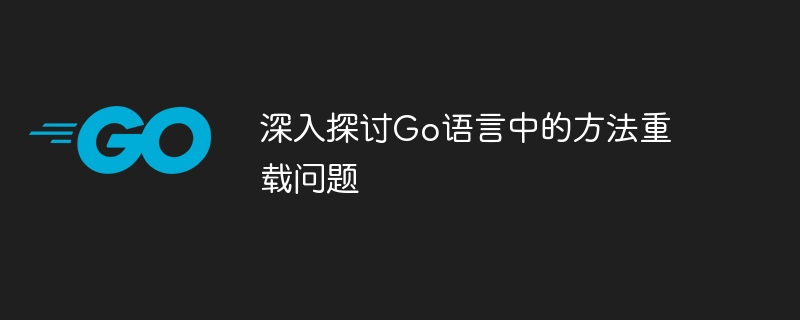Home >Backend Development >Golang >An in-depth discussion of method overloading issues in Go language
An in-depth discussion of method overloading issues in Go language
- WBOYOriginal
- 2024-04-03 13:36:011125browse
The Go language does not support direct method overloading, but uses interfaces to simulate similar functions. The interface defines a set of methods, and the type simulates overloading by implementing the interface's methods. It uses different interfaces to define the same method with different parameter lists, and creates types to implement these interfaces, thereby achieving the effect of method overloading.

In-depth discussion of method overloading in Go language
Introduction
Method overloading is the ability to define methods in the same class with the same name but different parameter lists. It is a powerful feature that improves the readability and maintainability of your code.
However, method overloading is not directly supported in the Go language. Instead, Go uses a mechanism called an interface to achieve similar functionality.
Interface
An interface is a type that defines a set of methods. To implement an interface, a type must explicitly implement all methods defined in the interface.
For example, we could define an interface named Shape that contains an Area method:
type Shape interface {
Area() float64
}Instead of method overloading
To simulate method overloading in Go, we can use different interfaces to define the same method with different parameter lists. We can then create types that implement these interfaces.
For example, we can create a rectangle type to implement the Shape interface:
type Rectangle struct {
width, height float64
}
func (r Rectangle) Area() float64 {
return r.width * r.height
}Practical case
Let’s consider a Program to calculate the area of different shapes. Using method overloading, we can write the following code:
import "fmt"
type Shape interface {
Area() float64
}
type Rectangle struct {
width, height float64
}
func (r Rectangle) Area() float64 {
return r.width * r.height
}
type Circle struct {
radius float64
}
func (c Circle) Area() float64 {
return math.Pi * c.radius * c.radius
}
func main() {
r := Rectangle{width: 5, height: 10}
c := Circle{radius: 5}
fmt.Println("Rectangle area:", r.Area())
fmt.Println("Circle area:", c.Area())
} In the above code, we have defined the Shape interface to represent any shape that has the Area method. We then created the Rectangle and Circle types to implement the interface.
By using interfaces, we can create methods with the same name based on different parameter lists, effectively simulating method overloading.
The above is the detailed content of An in-depth discussion of method overloading issues in Go language. For more information, please follow other related articles on the PHP Chinese website!

